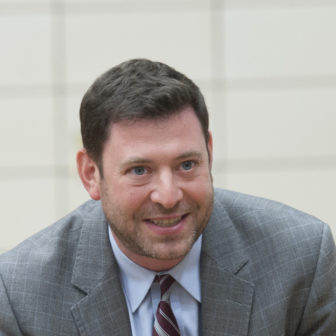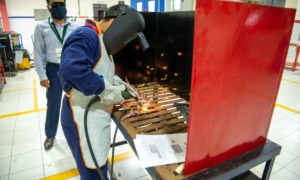 At a recent national Out of School Time (OST) conference I attended, one participant proudly shared how her program was working on innovative STEM (science, technology, engineering and math) programs. A second noted that his program was focused more on STEAM, adding “A” for arts. A third person described how their program promoted STREAM, adding in “R” for recreation. I joked that if you took all those letters and mixed them around, you could actually spell out the word “after school.”
At a recent national Out of School Time (OST) conference I attended, one participant proudly shared how her program was working on innovative STEM (science, technology, engineering and math) programs. A second noted that his program was focused more on STEAM, adding “A” for arts. A third person described how their program promoted STREAM, adding in “R” for recreation. I joked that if you took all those letters and mixed them around, you could actually spell out the word “after school.”
The OST field has a long history of shifting attention, staff time and funds onto one single hot-button component of youth development at the expense of others before eventually recognizing that they are all important and need to be integrated. We are now seeing this trend play out again with our industry’s topic du jour, social emotional learning (SEL).
Research from Change the Equation shows that many growing U.S. industries and companies in the fields of technology, healthcare, finance, entertainment, defense and manufacturing have well-paying jobs available but not enough skilled candidates to fill them. This dearth has become such a problem, some companies and industries are lobbying to change immigration regulations so they can hire more employees with the right skills from other countries. Youth development organizations and leaders are heading calls from elected and government officials, researchers, corporations and funders to invest much more in building up these skills in their students.
Simultaneously, research from Angela Duckworth in her book “Grit” and Carol Dweck on “Growth Mindset” have helped shine a brighter spotlight on the important role OST programs can play in developing student skills around teamwork, problem solving, resilience, self-confidence, communication and leadership.
Again, strong support for this effort comes from business leaders. As Misha Malyshev, founder and CEO of Teza Technologies shared with our Chicago middle school students visiting his office, “I need to hire people who can code, but I can teach them that. I am looking for people who are nice and work well with others. People willing to help their co-workers when they’re stuck on a problem and who are not embarrassed to ask for help when they need it. We can’t afford to waste time.”
Both STEM and SEL are so essential and relevant right now they are getting their own national conferences, curriculum, training gurus, evaluation tools, coalition groups and funding streams. However, for OST groups with limited staff time, budget and bandwidth, it would be much more efficient and powerful for students if we could integrate our efforts in both areas instead of creating unnecessary silos.
At After-School All-Stars (ASAS), we have found that organized team competitions, career field trips and overnight camps offer simple yet effective ways to help students develop both skill sets.
We saw this when students from Carver Middle School in Orlando took 1st place in the Florida NASA / MIT Zero Robotics National Competition. They were the only Title-I school competing and had the highest percentage of minority (100 percent) and female (48 percent) students among all teams in the country. But just as important as the STEM skills they gained were the SEL lessons they learned about collaboration, creativity, persistence and performing under pressure.
By folding STEM programs underneath our national Career Explorations Opportunity (CEO) initiative, students in our after-school STEM classes, such as coding, robotics, video game production, filmmaking, entrepreneurship and architecture, received additional resources to take regular career exploration field trips to companies such as Facebook, Google, Amazon, Deloitte, Newscorp, Fannie Mae and T-Mobile. They interviewed young employees with jobs related to their classes about what they do and how they got there. They began to understand the STEM skills needed to be hired and succeed in the job and the SEL skills required to thrive among their peers and move up the ranks.
This August, students from our Washington, District of Columbia; Philadelphia; Newark, New Jersey, and New York City chapters will gather for a weeklong, overnight “STEM CampUs” program at the New Jersey Institute of Technology. Students will live in dorms and work all week on teams to create and pitch new apps. They can visit various STEM undergraduate departments and businesses, and be mentored by college students with STEM majors. They will gain STEM and SEL skills, and understand how opportunities connect and options emerge.
If OST programs work more intentionally to integrate their efforts around STEM and SEL, then all of our students will be better equipped to handle whatever opportunities, challenges and options come their way.
Aaron Philip Dworkin is president of the After-School All-Stars National Network in Washington, D.C. Through free after-school and summer programs in more than 350 Title I schools in 18 cities, ASAS works to keep kids safe and healthy, help them graduate, explore careers they love and give back to others.





























